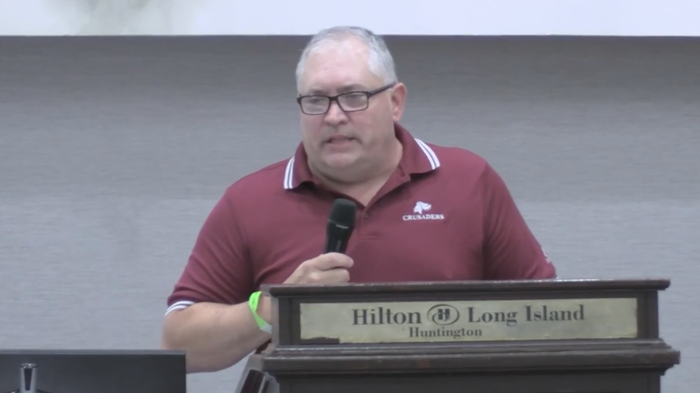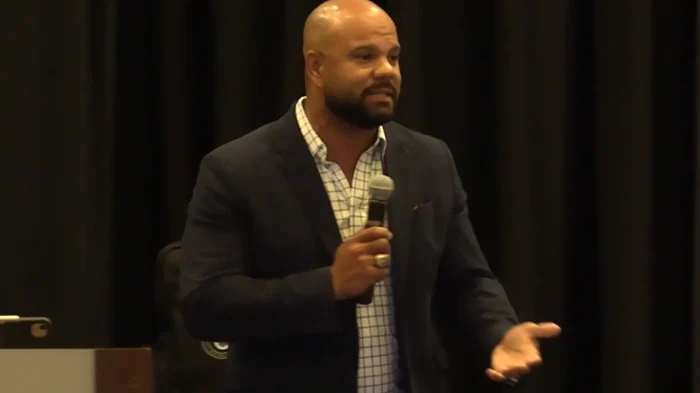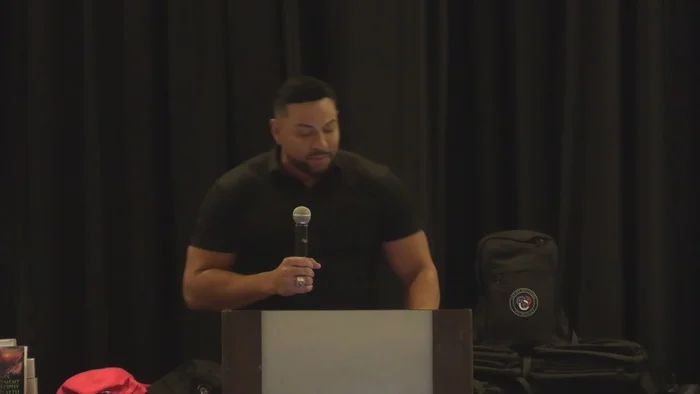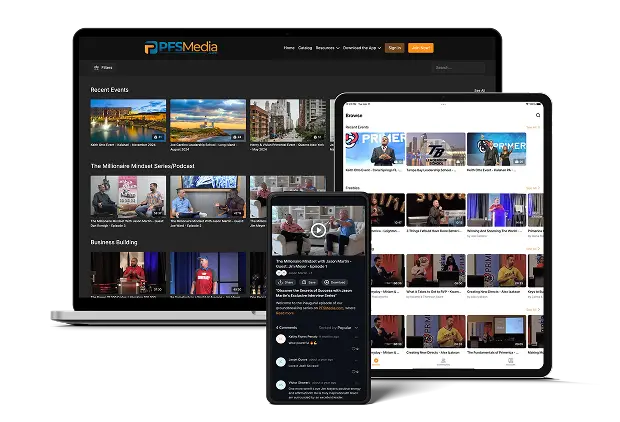Ever feel like you’re talking to people, but the connection just isn’t there? You’re not alone. Many reps struggle with mastering the art of people skills, and it can feel like you’re speaking a different language. But what if you could change that? What if you could turn every conversation into an opportunity to connect, engage, and grow your business? That’s exactly what Steve Rizza dives into in this session. It’s packed with practical tips and real-world examples that will transform how you interact with others. Whether you’re new to the business or a seasoned pro, this video is a game-changer. Watch it now and discover the secrets to mastering people skills that will set you apart and propel your success.
Video Transcription:
Hello.
Nice to meet you guys.
If we haven’t met, appreciate being here.
You know, we’re in the people business, so it should make sense that we should understand some basic people handling skills.
So that’s what we’re going to talk about.
But I just want to thank Joe and Denise Cardino for their unparalleled leadership and their unwavering friendship.
Special people.
Also, I want to thank our team that’s here, Amadeo Jose Velasquez, RVP, is here from Virginia.
And Michael and Kelly Revelli just made a decision at the beginning of this year, they beat their 2023.
In January of 2024, their income is double digit percentages over across the board.
And we have a new start on our team, Freddie Mota.
We expect that he’ll be walking across the stage as an RVP at the convention in 2027.
No doubt about that.
Okay, so people business with that.
If we haven’t met, I just want to give you some hope.
I don’t come from a financial services background, so at any point, if you’re sitting here saying, you know, why, I mean, why am I in a company with a financial, you know, why am I in a seminar with a financial services company? I used to be in the field of television production.
That’s what I went to school for.
And I remember my first opportunity meeting when it ended, they came running up to me and said, what do you like best? And I said that it ended.
I said, I’ll try, but if you ever ask me to speak in front of a room, I’m out.
And here we are.
Right.
So I guess I have to control this.
Right? All right.
So you got to master the people handling skills.
So there’s a few basic people handling skills that it’s important for you to embrace.
Okay.
So the first thing is, when you speak to people, very important to make eye to eye contact.
Okay.
It’s like the equivalent of a phone connection.
So, like, if you look away, that’s like when Excel call drops.
Okay.
But when you look at people, I’ll give you a little hint.
Do it with a smile rather than a frown.
Much more friendly.
Right.
And also, when you look at people, Steve said, I gotta look at people like, don’t look at them like you’re gonna shoot lasers through the back of their head.
Okay.
So look at people when you talk to them, the second skill you want to embrace is listen twice as much as you talk.
Right? We have two ears and one mouth for a reason.
It is hard to learn about someone else when you’re doing all of the talking, right? Does that make sense? You need to ask questions that people know the answers to.
Okay.
So a great group of questions you could ask here are open questions that require thought, uncovering information, often leading to furthering the conversation.
Like who, what, where, when, why, how.
For example, where do you work? Right.
Do most people know that answer? Right.
How do you like it there? What do you like most? What don’t you like? All questions that people know the answers to that kind of open up the door to further conversation.
Right now, the next thing is you want to always answer questions with questions.
So we’re going to go a little bit deeper into the art of asking questions.
There are different types of questions that you could ask people.
So the first type of question is the involvement question.
These are questions that make people think that, what will it be like? Okay.
Once they’re involved with whatever you’re talking to them about.
For example, if you had the chance to work with people, have better hours and make more money, would you explore that opportunity? So you’re asking a question that they’re picturing what it would be like to have better hours, more money, and work with people.
Because maybe that.
How did I.
By the way, how did I know that those were things they wanted? Because I asked them the other questions from the prior page.
Right.
By the way, Mike cash.
Where’s Mike cash? Two equal sides.
It’s the isosceles triangle, the porcupine.
Okay.
This is like returning a serve in tennis.
Someone asks you a question, you kind of ask it right back.
For example, how long is training going to last? Well, how much time do you think you can invest to build your business? Right? Hey, could you pass the salt? Would you like me to pass the salt? You know, I used to do that, practice that all the time.
So we go out to happy hour when I worked at Court TV.
It’s a Friday and can you get me a drink? Would you like me to get you a drink? Why do you keep doing that? What am I doing? Every question I ask, you answer the question.
What question did I just ask? There, you did it again.
What did I do again? And they left.
But I practiced alternative choice.
Okay.
Questions that have two answers, but both lead to them moving forward.
It’s best used with appointment times, coverage amounts, money amounts.
For example, is Wednesday night good or is Saturday morning better? Okay.
What’s more comfortable for you? Is $75 a month good? Or could you commit to 150 amounts? Great.
With appointment times? The tie down question.
Okay.
It’s added at the end of the sentence, and it’s aimed to getting a single word response, a yes or a no.
But either one yes or no moves in the direction that you want them to move.
For example, you’re open to looking at a way to generate additional income, aren’t you? Now, the inverted tie down just puts the tie down on the front instead of the back.
So, for example, aren’t you open to looking at a way to generate additional income? So aren’t you on the front? So those are tie downs.
Now, if you want to learn more of this stuff, okay, talk to your vice president and ask them about how do I learn more about Tom Hopkins? Because that’s all this is.
You know, if you got here, if you weren’t worried about lunch and you spent and you were here earlier, you got to see a 20 minutes video from Joe Ensor.
And he’s the one we learned all this stuff from, and he’s the one that put us in front of people like Tom Hopkins.
And that’s how come we know these skills today.
Okay, wait for the answer.
Once you ask the question.
Wait for the answer.
Right.
You need to pay attention.
See, don’t think about what you’re going to say next before they’ve even finished.
You know, Mark Marchesani, a hero in the business.
He said when you talk to people, you ask a question, give yourself a three count.
Okay.
When you think they’re done speaking in your.
Not out loud.
You don’t do this out loud.
But one Mississippi, two Mississippi, three Mississippi.
Nothing else coming out of them.
Okay.
You could go next.
Okay.
Wait for the answer.
And lastly, you heard.
You heard we talked about Jim Rohn earlier today, right? You know what Jim Rohn’s net worth was when he died was a half a billion dollars.
It’s pretty good, right? Pretty good.
Take advantage of every opportunity to practice your communication skills so that when important occasions arise, you will have the gift, the style, the sharpness, the clarity and the emotions to affect other people.
I just want to thank you guys for the time.
I appreciate it.
Remember, every second counts.
Let it rip.




